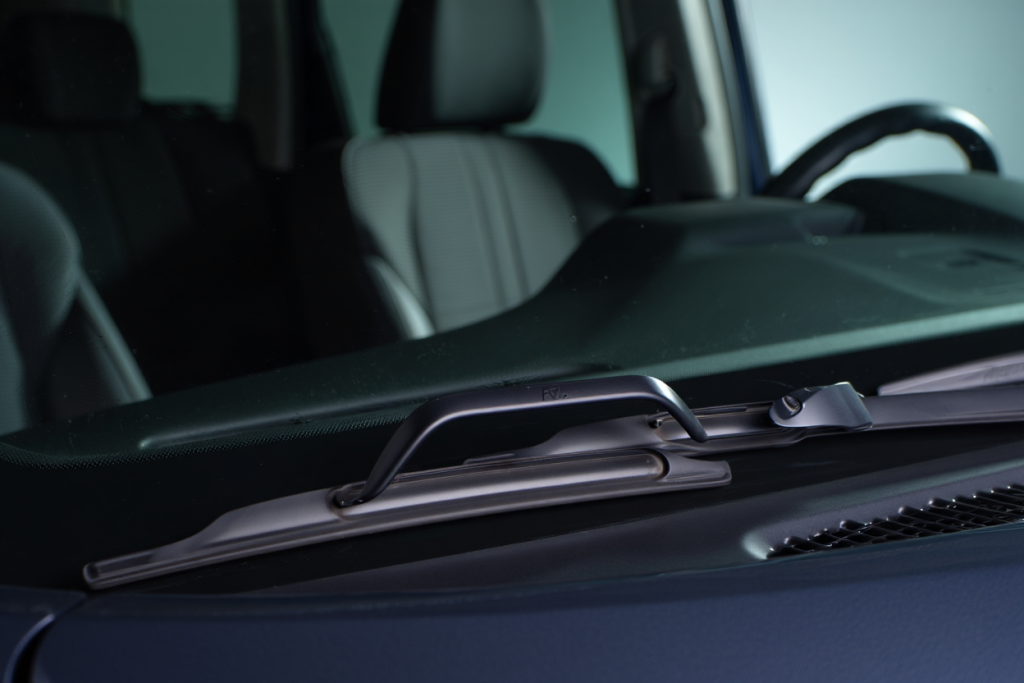Wiper blades are a small but essential part of your car’s safety system. Clear visibility during rain, snow, or fog depends entirely on their performance. Yet, many drivers overlook wiper maintenance until streaking, noise, or skipping occurs, which can compromise safety and lead to unnecessary replacements.
Maintaining your wiper blades can extend their lifespan, improve performance, and prevent damage to your windshield. This guide explores practical maintenance tips, cleaning techniques, seasonal considerations, common mistakes, replacement advice, and how to get the most out of both rubber and silicone blades.
Why Wiper Blades Wear Out?
Understanding why wiper blades deteriorate helps in preventing premature wear.
Natural Wear and Tear
Rubber and silicone blades degrade over time due to exposure to sunlight, heat, and cold. UV rays break down the rubber or silicone compounds, causing cracks, stiffness, and loss of flexibility.
Environmental Factors
- Heat and Sunlight: Causes drying and hardening of the rubber edge.
- Cold and Ice: Makes blades brittle, increasing the risk of tearing.
- Road Debris: Sand, dirt, and grit can abrade the rubber surface.
- Salt and Chemicals: Common in winter, accelerating deterioration.
Usage Patterns
Frequent use, particularly during heavy rain, snow, or dust, accelerates blade wear. Short, sporadic wiping in dry conditions can also damage blades due to friction.
Types of Wiper Blades
Different wiper blade materials require slightly different maintenance practices.
Rubber Wiper Blades
- Traditional option: Made from natural or synthetic rubber.
- Pros: Affordable and widely available.
- Cons: Shorter lifespan (6–12 months), susceptible to cracking, UV damage, and stiffness.
Silicone Wiper Blades
- Modern alternative: Made from flexible silicone compounds.
- Pros: Lasts 2–3 years, handles extreme weather, provides quieter wiping.
- Cons: Higher cost, requires occasional silicone spray for best performance.
Hybrid or Beam Blades
- Combines rubber or silicone with a protective frame for better performance in snow, ice, or extreme weather. Maintenance is similar to silicone blades.
Signs Your Wiper Blades Need Attention
Even with proper care, wipers show signs of wear before they fail completely.
Streaking or Smearing
- Caused by hardened rubber, dirt, or debris.
- Reduces visibility during rain or fog.
Chattering or Skipping
- Occurs when the blade loses flexibility or frame alignment is off.
- Creates distracting noise and uneven wiping.
Cracks, Splits, or Tears
- Physical damage from UV exposure, extreme temperatures, or ice scraping.
- Prevents proper contact with the windshield.
Uneven Wiping or Missed Spots
- Indicates the blade edge has worn unevenly or the frame is bent.
- Increases risk of blind spots and accidents.
Practical Maintenance Tips for Wiper Blades
Proper care can extend blade life and improve performance dramatically.
1. Clean the Blades Regularly
- Wipe the rubber or silicone edge with a damp cloth to remove dirt, grime, or road salt.
- Use mild soap if needed to remove stubborn residues.
- Cleaning prevents streaking, skipping, and premature wear.
2. Keep the Windshield Clean
- A dirty windshield can grind debris into the wiper blade, causing scratches or damage.
- Regular washing with car-safe cleaners helps maintain both the windshield and blades.
3. Avoid Wiping a Dry Windshield
- Friction from dry wiping accelerates rubber wear.
- Always use washer fluid or water before operating the wipers.
4. Lift Blades in Snow or Ice
- Ice can freeze blades to the glass, causing tears when wipers are operated.
- Use an ice scraper or defroster first, then wipe gently.
5. Use Proper Washer Fluid
- Avoid plain water as it can freeze in winter or leave streaks.
- Choose fluid with cleaning agents and anti-freeze properties for year-round protection.
Seasonal Considerations
Different seasons require specific attention for wiper blade maintenance.
Winter Maintenance
- Inspect blades for cracks or stiffness before winter.
- Consider winter-specific or silicone blades for snow, ice, and freezing temperatures.
- Remove ice and snow from the windshield before operating blades.
Summer Maintenance
- High temperatures can cause rubber to dry and crack.
- Park in shaded areas or use a windshield sunshade.
- Wipe blades periodically with a damp cloth to remove road grime.
Rainy Season Maintenance
- Clean blades more frequently to remove pollen, dirt, and debris.
- Replace worn blades promptly to maintain clear visibility in heavy rain.
Common Mistakes That Shorten Blade Lifespan
Avoid these pitfalls to maximize blade performance.
Delaying Replacement
- Worn blades compromise visibility and scratch the windshield.
- Replace as soon as signs of wear appear.
Using Blades on a Dry Windshield
- Friction damages the rubber edge.
- Always wet the windshield first.
Ignoring Climate Needs
- Standard blades may fail in heavy snow or freezing temperatures.
- Consider winter or silicone blades for harsh conditions.
Using Incorrect Blade Size
- Oversized or undersized blades reduce contact with the windshield.
- Always check manufacturer specifications.
How to Properly Replace Wiper Blades?
Even with maintenance, blades must be replaced eventually.
Choosing the Right Replacement
- Consult your car owner’s manual for size and type.
- Consider weather conditions and driving habits.
DIY Installation
- Lift the wiper arm and remove the old blade.
- Attach the new blade following the included instructions.
- Ensure it clicks into place securely.
Professional Installation
- Recommended for hybrid or beam blades with complex designs.
- Some auto shops offer seasonal wiper inspection and replacement services.
Cost Considerations
Maintaining blades reduces long-term costs, but replacement is relatively inexpensive.
Typical Costs
- Rubber blades: $10–$25 per pair
- Silicone or premium blades: $20–$50 per pair
- Winter blades: $25–$60 depending on size and design
Longevity vs. Price
- Silicone and hybrid blades cost more upfront but last longer, reducing replacement frequency.
- Regular inspection helps maximize value.
Conclusion
Wiper blades are essential for visibility and driving safety. Proper maintenance—including regular cleaning, seasonal checks, and avoiding dry-wiping—can extend their life, improve performance, and reduce replacement frequency.
Regular inspection, using the right washer fluid, and upgrading to silicone or winter-specific blades in extreme conditions ensures optimal performance.
FAQs
- How often should I clean my wiper blades?
Clean your wiper blades at least once a month or whenever you wash your car. Regular cleaning prevents debris buildup, reduces streaking, and prolongs the life of both rubber and silicone blades. - Can wiper blade maintenance prevent windshield damage?
Yes. Properly cleaned and maintained blades reduce the risk of scratching the windshield caused by trapped debris, hardened rubber, or ice. Regular inspection protects your glass and ensures safe driving. - Are silicone wiper blades easier to maintain than rubber?
Generally, yes. Silicone blades resist UV, heat, and cold, making them more durable. They may require occasional silicone spray for optimal performance but last longer than rubber with minimal effort. - Can I use household cleaners on wiper blades?
Mild soap and water are safe. Avoid harsh chemicals like ammonia, bleach, or strong solvents, as they can degrade the rubber or silicone. Use windshield-safe cleaners for both glass and blades. - How do I know when maintenance is no longer enough?
If you notice streaking, skipping, chattering, cracks, or missed spots despite cleaning and proper care, it’s time to replace the blades. Maintenance prolongs life but cannot restore severely worn blades.

Benjamin Grey is an automotive engineer and writer at Car Parts Advisor. With years of experience in the automotive industry, he shares expert advice on car parts, maintenance, and repairs to help car owners keep their vehicles running smoothly.





